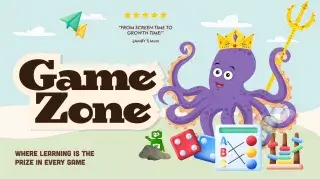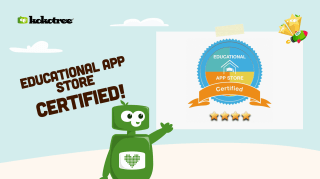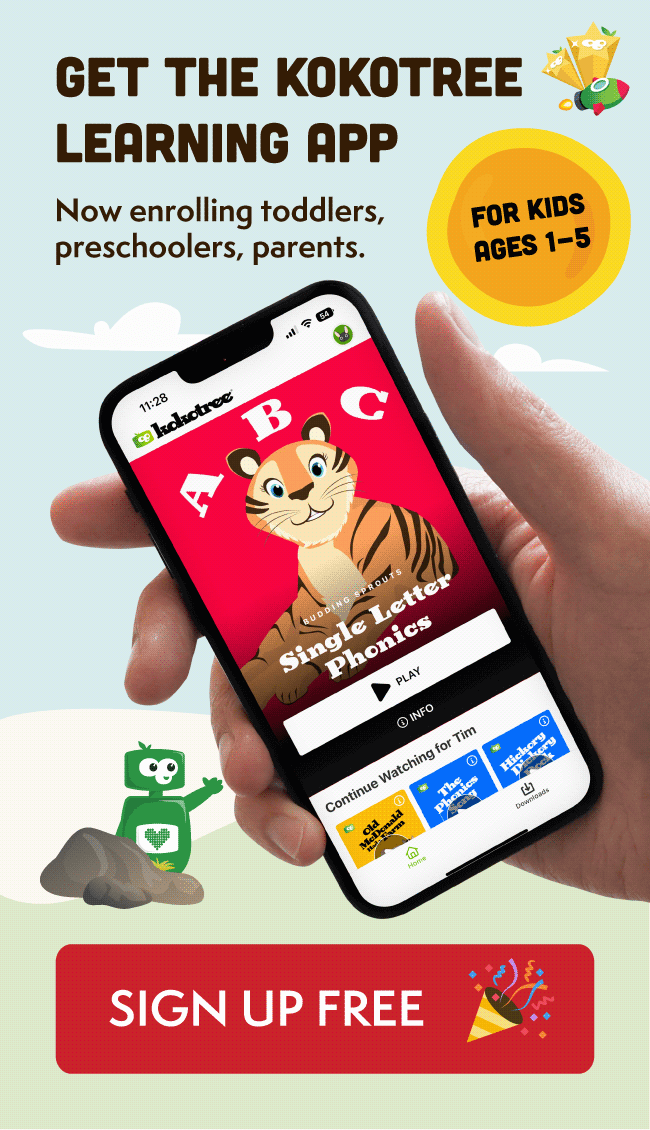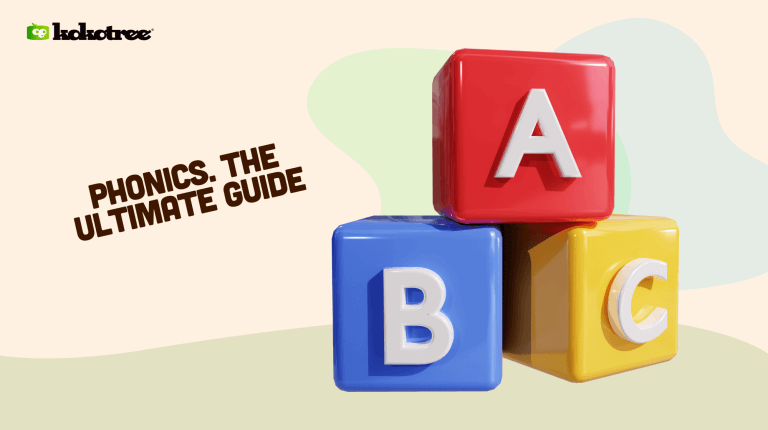
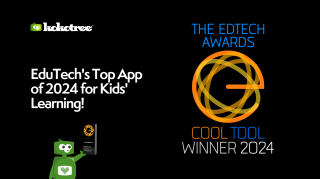
As a busy parent of a toddler or preschooler, you’ve probably heard the term “phonics” being thrown around in conversations about teaching reading. But what exactly is phonics, and why is it essential for your child’s reading journey? This comprehensive guide will explore everything you need to know about phonics instruction, its importance, and how to teach children using this method.
Phonics is a method of teaching reading that focuses on the relationship between written letters and spoken sounds in language. It’s a way of teaching children how to recognize the appropriate sound each letter makes in a word, which leads to reading fluency. Phonics is a crucial component of reading instruction, allowing children to decode and understand written language. Learn more: Phonics definition
The National Reading Panel has identified phonics for kids instruction as a key component of effective reading instruction. Teaching phonics helps children develop essential reading skills, such as phonemic awareness – hearing, identifying, and manipulating individual sounds (phonemes) in spoken words. It also helps children segment words into their component sounds, which is vital for reading and spelling.
Phonics instruction is particularly important for teaching preschool children to read because it provides a systematic approach to understanding written language. This systematic instruction enables children to connect spoken language and written letters, decode words and read more easily.
There are several approaches to teaching phonics, each with strengths and weaknesses. Some of the most common phonics methods include:
Synthetic Phonics – This approach involves teaching children the individual sounds (phonemes) and blending them to form words. For example, a child learning the word “cat” would be taught the sounds /c/, /a/, and /t/ separately before blending them to read the word.
Analytic Phonics – This method teaches children to analyze the phonic elements within whole words. Instead of breaking words down into individual sounds, children learn to recognize common patterns and word families, such as “at” in “cat” and “bat.
Analogy Phonics – This approach focuses on teaching students to use their knowledge of known words to read new, similar words. For example, if a child knows the word “cat,” they can use that knowledge to read the word “hat.”
Phonics through Spelling – This method emphasizes the connection between reading and spelling, with children learning to segment words into individual sounds to write them correctly.
Whether you’re a classroom teacher or a parent looking to give your own kids a head start in reading, there are several strategies you can use to teach phonics effectively:
Explicit Instruction – Start by teaching children the individual sounds of each letter, and gradually introduce more complex phonic elements such as blends and digraphs.
Multisensory Approach – Engage your child’s senses by incorporating visual, auditory, and tactile elements into your phonics lessons. For example, use letter tiles or magnetic letters to help children visualize the relationship between written letters and spoken sounds.
Practice, Practice, Practice – Provide plenty of opportunities for your child to practice phonics through reading and writing activities. Encourage them to sound out new words and use their phonics knowledge to decode unfamiliar texts.
Phonemic awareness is a crucial skill in early learning to read. It refers to the ability to hear, identify, and manipulate individual sounds (phonemes) in spoken words. By helping your child develop their phonemic awareness, you will lay the groundwork for them to grasp the concepts of phonics more easily. Simple activities like rhyming, segmenting, and blending spoken words can foster this skill, building a solid reading and writing proficiency foundation.
Developing phonemic awareness is essential for understanding phonics, as it allows children to recognize the individual sounds that makeup words. Letter recognition is a critical aspect of phonemic awareness, as it enables children to associate specific sounds with the corresponding letters in the English alphabet. This connection between letter sounds and written representation is vital for helping children read words and become fluent readers.
While phonemic awareness and phonics are closely related, they are, in fact, distinct concepts in the realm of teaching reading. The key difference between the two lies in their focus and application.
Phonemic awareness deals exclusively with spoken language and the ability to identify and manipulate the individual sounds in spoken words. As mentioned earlier, activities that promote phonemic awareness include rhyming, segmenting, and blending sounds in words. Many teachers and parents use games and exercises that focus on these aspects to help most children develop their phonemic awareness skills.
On the other hand, phonics is concerned with the relationship between written letters and spoken sounds. It involves teaching children how to decode written language by connecting the sounds of spoken language to the letters that represent them. In other words, phonics instruction helps children blend sounds to read whole words and segment words into individual sounds for spelling.
While phonemic awareness and phonics are closely related skills, they play unique roles in teaching children to read. Phonemic awareness focuses on recognizing and manipulating the sounds in spoken language, while phonics instruction builds on this foundation by connecting these sounds to written letters. By developing phonemic awareness and phonics skills, children will be better equipped to tackle reading and writing challenges, setting them up for success in their educational journey.
The links below are your comprehensive resource for delving deeper into phonics instruction. With 30 additional pages, each thoughtfully designed and curated to enhance your understanding, this guide covers a wide range of topics, tips, and techniques that will equip you with the knowledge and confidence to support your child’s reading journey.
Whether you’re a seasoned educator or a parent eager to learn more, our extensive Phonics Teaching Guide provides invaluable insights and practical advice on effectively teaching phonics. Explore and discover the many facets of phonics instruction, and embark on a transformative learning experience that will empower you to unlock your child’s reading potential.
Introduction to Phonics for Preschoolers and Toddlers
Discover the world of phonics and its importance in early literacy development. Learn about the benefits of teaching phonics to preschoolers and toddlers and set realistic goals and expectations for this comprehensive course.
A comprehensive guide designed to explain the fundamental terms and concepts used in phonics instruction. Aimed at educators, parents, or caregivers looking to facilitate early reading and writing skills, this glossary offers detailed descriptions and clarifications on everything from basic phonics concepts to advanced teaching strategies.
How to Teach Phonics Step by Step
Get started immediately with this quick-start guide to teaching phonics to your preschooler. It’s the fastest way to get started on your phonics learning journey.
Phonemic Awareness Assessing Your Child
Understand the role of phonemic awareness in phonics and how to assess your child’s current level. Engage in simple activities and gain tips for supporting your child’s phonemic awareness development.
Introduce the first half of the alphabet with engaging activities, associating each letter with its sound. Experience fun ways of learning and practicing letter sounds.
Explore the second half of the alphabet and establish connections between letters and sounds. Find entertaining activities to learn and practice letter sounds.
Phonics Letter Formation (A-M)
Teach letter formation for the first half of the alphabet through tracing and writing activities. Discover materials and resources to support letter learning.
Phonics Letter Formation (N-Z)
Continue teaching letter formation for the second half of the alphabet with tracing and writing activities. Find more materials and resources to support letter learning.
Learn about the importance of rhyming words in phonics and engage in fun activities and games to introduce and practice rhyming words.
Entertaining Phonics Games and Activities for Toddlers
Discover a variety of engaging phonics games and activities for different skill levels. Receive tips for adapting games and activities to match your child’s interests and needs.
Exciting Phonics Games and Activities for Preschoolers
Explore more captivating phonics games and activities for different skill levels. Gain tips for adapting games and activities to suit your child’s interests and needs.
Blending and Segmenting in Phonics
Understand the importance of blending and segmenting in phonics, and learn activities and games to develop these essential skills.
Strengthening Blending and Segmenting Skills in Phonics
Enhance your child’s blending and segmenting skills with additional activities and games. Receive tips for supporting your child’s progress in these areas.
Exploring Word Families and CVC Words for Early Readers
Delve into word families and CVC words, and their role in phonics. Engage in activities and games that introduce and practice these concepts.
Mastering Word Families and CVC Words in Phonics
Further develop your child’s understanding of word families and CVC words with more activities and games. Gain tips for connecting word families to your child’s daily life.
Discovering Digraphs in Phonics for Early Readers
Introduce digraphs and their role in phonics. Learn activities and games to teach and practice digraphs.
Enhancing Digraph Skills in Phonics for Preschoolers
Build on your child’s digraph skills with more activities and games. Gain tips for integrating digraphs into your child’s reading and writing.
Introducing Consonant Blends in Phonics for Toddlers
Discover consonant blends and their role in phonics. Learn activities and games to teach and practice consonant blends.
Mastering Consonant Blends in Phonics for Preschoolers
Strengthen your child’s understanding of consonant blends with more activities and games. Receive tips for integrating consonant blends into your child’s reading and writing.
Phonics Vowel Teams and Diphthongs
Explore vowel teams and diphthongs and their role in phonics. Engage in activities and games to teach and practice these concepts.
Phonics Silent Letters and Tricky Spellings
Learn about silent letters and tricky spellings in phonics. Discover activities and games to help your child recognize and remember these exceptions, along with tips for supporting their understanding of these spelling rules.
Building Vocabulary with Phonics for Early Learners
Understand the importance of building vocabulary alongside phonics skills. Engage in activities and games that expand your child’s vocabulary using phonics principles.
Enhancing Vocabulary Acquisition with Phonics
Expand your child’s vocabulary further with more activities and games using phonics principles. Receive tips for incorporating new words into daily conversations and play.
Improving Reading Comprehension through Phonics
Discover the connection between phonics skills and reading comprehension. Engage in activities and games that improve reading comprehension using phonics strategies.
Strengthening Reading Comprehension with Phonics Techniques
Enhance your child’s reading comprehension with more activities and games using phonics strategies. Gain tips for choosing age-appropriate books and supporting their reading development.
Sight Words: Reading High-Frequency Words
Introduce sight words and their importance in reading fluency. Learn activities and games to teach and practice high-frequency sight words.
Phonics in Writing: Encouraging Early Writing Skills
Incorporate phonics principles into your child’s early writing attempts. Engage in activities and games to practice writing skills using phonics knowledge.
Creating a Phonics Print-Rich Environment
Learn tips for creating a home environment that supports phonics learning and literacy development. Discover ideas for incorporating print materials and literacy activities into daily routines.
Phonics Through Songs and Music
Discover the benefits of using songs and music to teach phonics skills. Learn ideas for incorporating phonics songs and music into daily routines and playtime.
Phonics and Screen Time: Using Apps and Online Resources
Find age-appropriate apps and websites to support phonics learning and tips for balancing screen time with other phonics activities.
Assessing Phonics Progress and Next Steps
Use activities and games to assess your child’s progress in phonics. Receive tips for celebrating successes and addressing challenges, and learn about next steps for continued phonics learning and literacy development.
Phonics Resources and Support for Parents
Find recommended books, apps, and websites for continued phonics learning. Gain tips for finding local support and resources, such as tutors or reading programs, and receive encouragement as you support your child’s phonics journey.
A structured environment simplifies the learning process for young children. Establishing a routine and progressively organizing lessons allows them to absorb new knowledge consistently. Teaching phonics systematically ensures children understand simpler concepts before moving on to more complex ones.
Technology has opened new doors for interactive learning, and a phonics-focused learning app for kids can be an excellent addition to your child’s educational journey. Such apps utilize engaging activities, videos, and games to reinforce phonics skills while providing a fun and interactive learning experience.
Children learn best when they’re having fun, and phonics games and puzzles can make their learning experience enjoyable. From matching sounds to pictures or playing memory games with letter-sound cards, hands-on activities keep your child engaged and motivated to learn.
Turn everyday encounters into phonics lessons by encouraging your child to identify and practice letter-sound relationships wherever they go. Whether it’s reading signs at the grocery store or spotting letters on a car’s license plate, these real-life applications solidify phonics concepts for your child.
Invest in workbooks and engaging children’s books that focus on phonics skills. These resources provide visual cues, reinforce phonics concepts, and give your child opportunities to apply what they’ve learned in a more structured format.
Stay connected with educators, such as teachers and early childhood experts, to receive valuable guidance and resources. Learning from the experience of others and collaborating with experts can enrich your child’s phonics journey.
Phonics serves as a cornerstone for developing strong reading and writing skills in young learners. Let’s explore additional ways you can support your child’s budding literacy abilities using phonics.
As your child becomes more comfortable with letter-sound relationships, it’s essential to help them develop reading fluency. Encourage your child to read at a comfortable pace while focusing on accuracy and expression. Using a variety of phonics-based texts, such as simple stories, rhyming books, and other engaging resources, will help them build their fluency skills.
Phonics is crucial for reading and writing and encourages creativity by expanding your child’s vocabulary. Use phonics as a foundation to introduce new words, create imaginative stories together, or write fun messages to one another. This process allows your child to apply their phonics knowledge meaningfully and creatively.
Many children benefit from multisensory learning, which engages multiple senses during educational activities. Incorporate tactile, auditory, and visual elements when teaching phonics to create a richer learning experience. For example, encourage your child to trace textured letters, use letter magnets on a board, or listen to phonics songs and audiobooks.
Each child has a unique learning style, so adapting your phonics teaching methods is crucial. Observe what best engages your child, whether it’s hands-on activities, visual materials, or auditory input. By tailoring your approach to their preferences, you can maximize their chances of success while maintaining a positive learning environment.
Reinforcing phonics concepts and reviewing material routinely is essential for long-term retention. Plan regular sessions to revisit previous lessons and provide ample practice opportunities. Continual reinforcement will help build your child’s confidence as they acquire new reading and writing skills.
Here’s a handy FAQ section to help address any questions you may have related to phonics and early childhood education. Following these recommendations will enhance your child’s learning experience and minimize potential challenges.
Children can begin learning phonics as early as 3-4 years old, as they start developing their language and listening skills. However, it’s essential to tailor the teaching methods and materials to suit the child’s individual needs and readiness.
Phonics focuses on the relationship between written letters and their corresponding sounds. In contrast, phonemic awareness refers to hearing, identifying, and manipulating individual sounds (phonemes) in spoken words without visual representations.
Observe your child during various learning activities to understand their preferences. Focus on what best engages their attention—visual materials, auditory input, or tactile experiences—and structure your phonics teaching methods accordingly.
Effective phonics teaching strategies include creating a structured environment, incorporating multisensory learning methods, using engaging materials such as phonics games, books, and apps, and tailoring your approach to your child’s unique learning style.
Phonics plays a vital role in reading development by helping children decode and recognize words based on their letter-sound relationships. This foundation is essential for building reading fluency and comprehension skills.
Encourage your child to practice writing letters and words, focusing on correct letter formation and letter-sound relationships. As their phonics skills improve, they will gain the confidence to write more complex words and sentences.
Be patient and supportive during phonics lessons, adapting your teaching methods to your child’s needs, and encouraging their progress. Offer ample opportunities for practice and remind them that it’s okay to make mistakes—it’s how we learn and improve!
Yes, you can teach both phonics and sight words to provide a balanced literacy foundation. While phonics helps with decoding unfamiliar words, sight words provide an opportunity to quickly recognize high-frequency words that may not follow typical phonics patterns.
Digraphs are pairs of letters that produce a single sound, such as “sh” or “ch.” Blends are combinations of two or more consonants where you still hear the individual sounds, such as “st” or “bl.”
Regular review and reinforcement are essential for long-term retention. Schedule consistent phonics sessions, with durations depending on your child’s age and attention span, to revisit previous lessons and provide opportunities for practice.
Valuable resources for teaching phonics include workbooks, phonics-focused children’s books, learning apps for kids, phonics games, songs, and videos. In addition, collaborating with educators and early childhood experts can yield guidance and practical suggestions.
Monitor your child’s progress through assessments and regular communication with their educator. Encourage open feedback and be receptive to their needs. Adjust your approach and seek additional support if your child encounters challenges or needs extra help.


